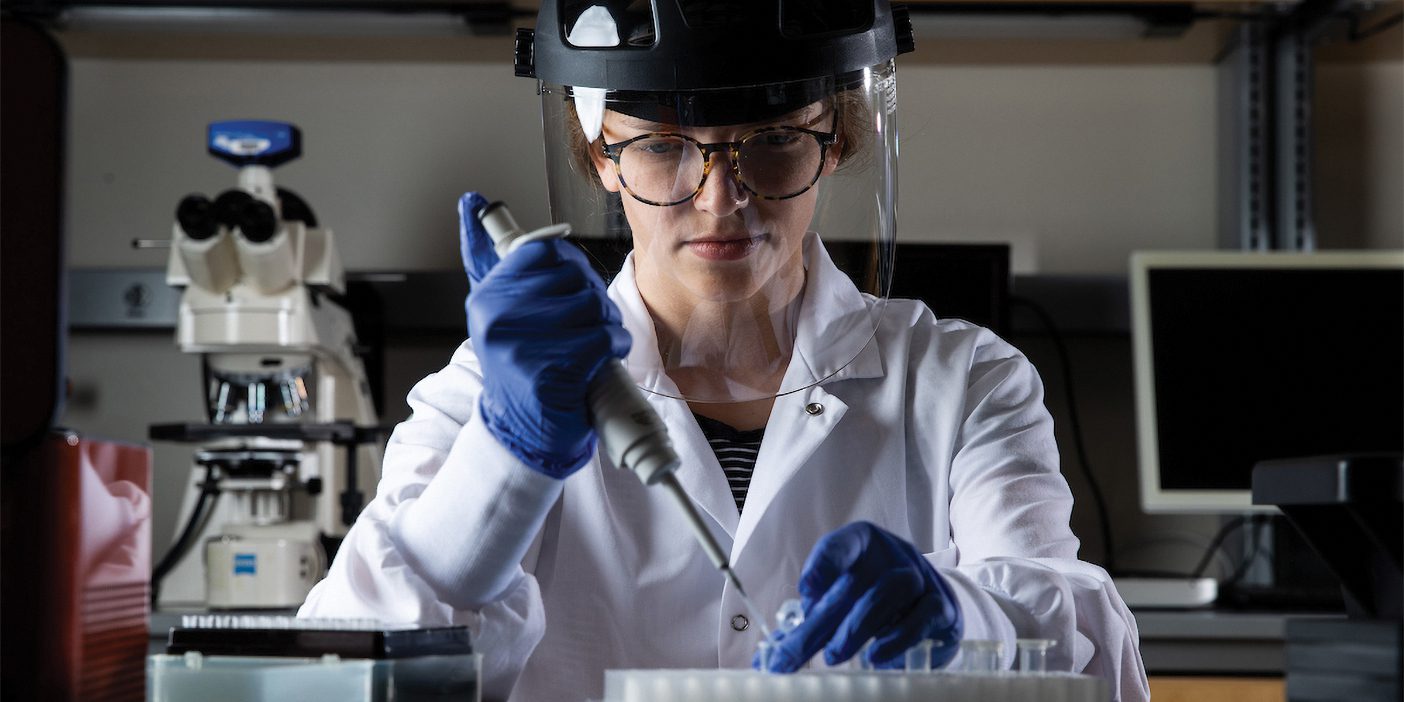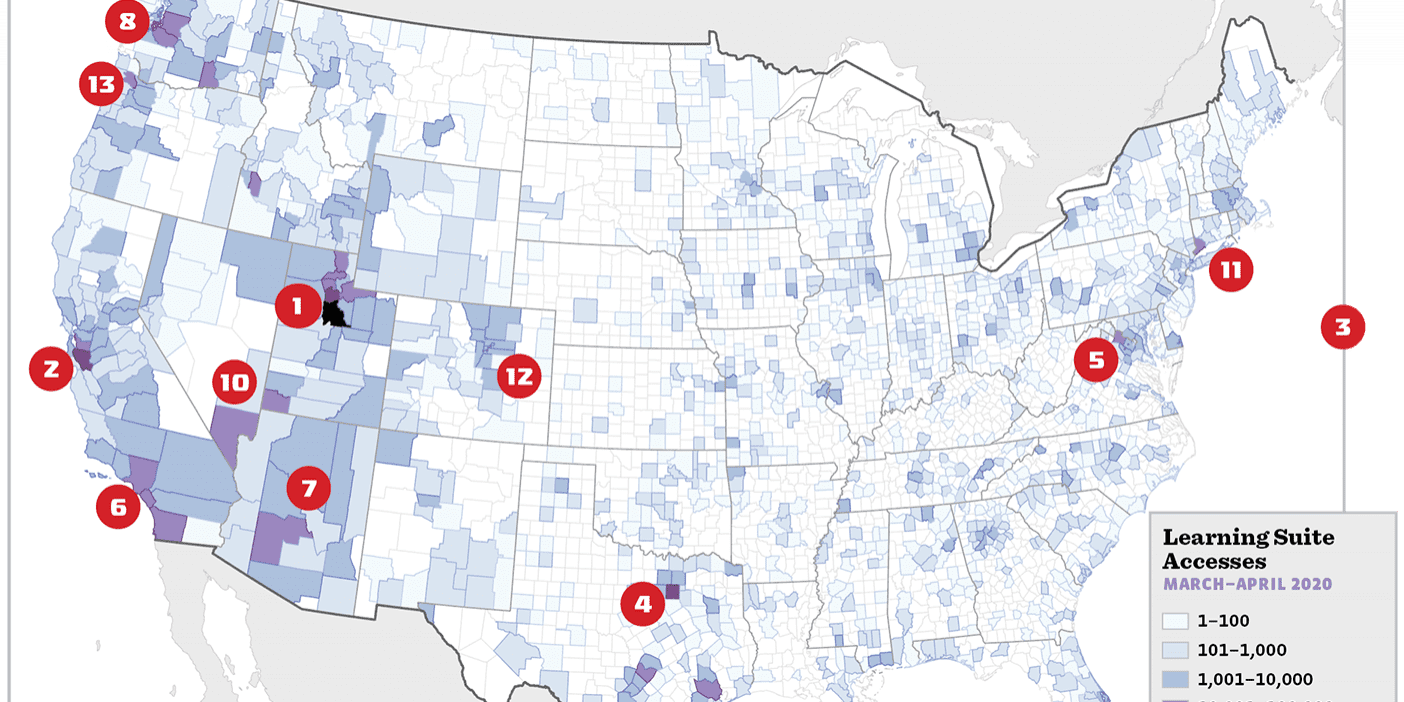Stepping Up
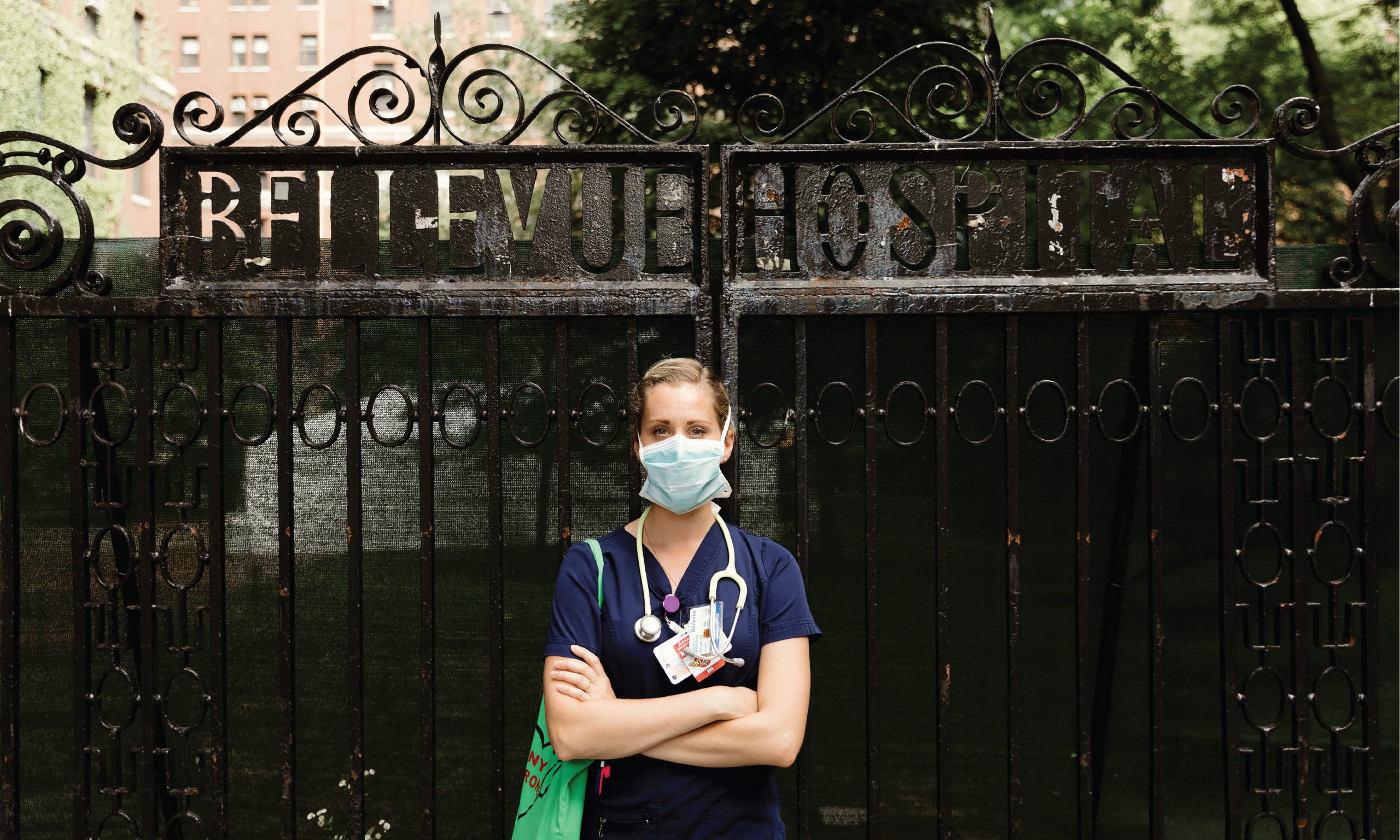
Stepping Up
As the COVID-19 virus swept across the world, alumni everywhere sought ways to help. Here are stories from three of them.
A public health official in New Mexico ensuring that coronavirus testing is available on the Navajo Reservation; a Mayo Clinic doctor helping the families of the seriously ill face death with dignity; a Relief Society president in Massachusetts organizing videos to be shared with lonely people in rest homes; doctors and nurses continuing to provide care even as their workplaces became ground zero; countless mothers and fathers taking on roles as teachers for their children as they manage work under trying circumstances. Amid the barrage of pandemic news—hundreds of thousands of deaths, harm to the world economy, and a fundamental reshaping of social interactions—BYU grads have put aside fears to serve, share, and show love and compassion in noteworthy ways. What follows are a few of the many stories of BYU alumni on the pandemic’s front lines, meeting difficulty with devotion and kindness.
A Song for Roberto
By Channing Hoybjerg Voyles (’16)
Channing Voyles is an ICU nurse at Bellevue Hospital in New York City. This spring her hospital turned the ICU into a COVID ICU, which immediately filled to capacity with COVID-positive patients.
It’s such a lonely virus.
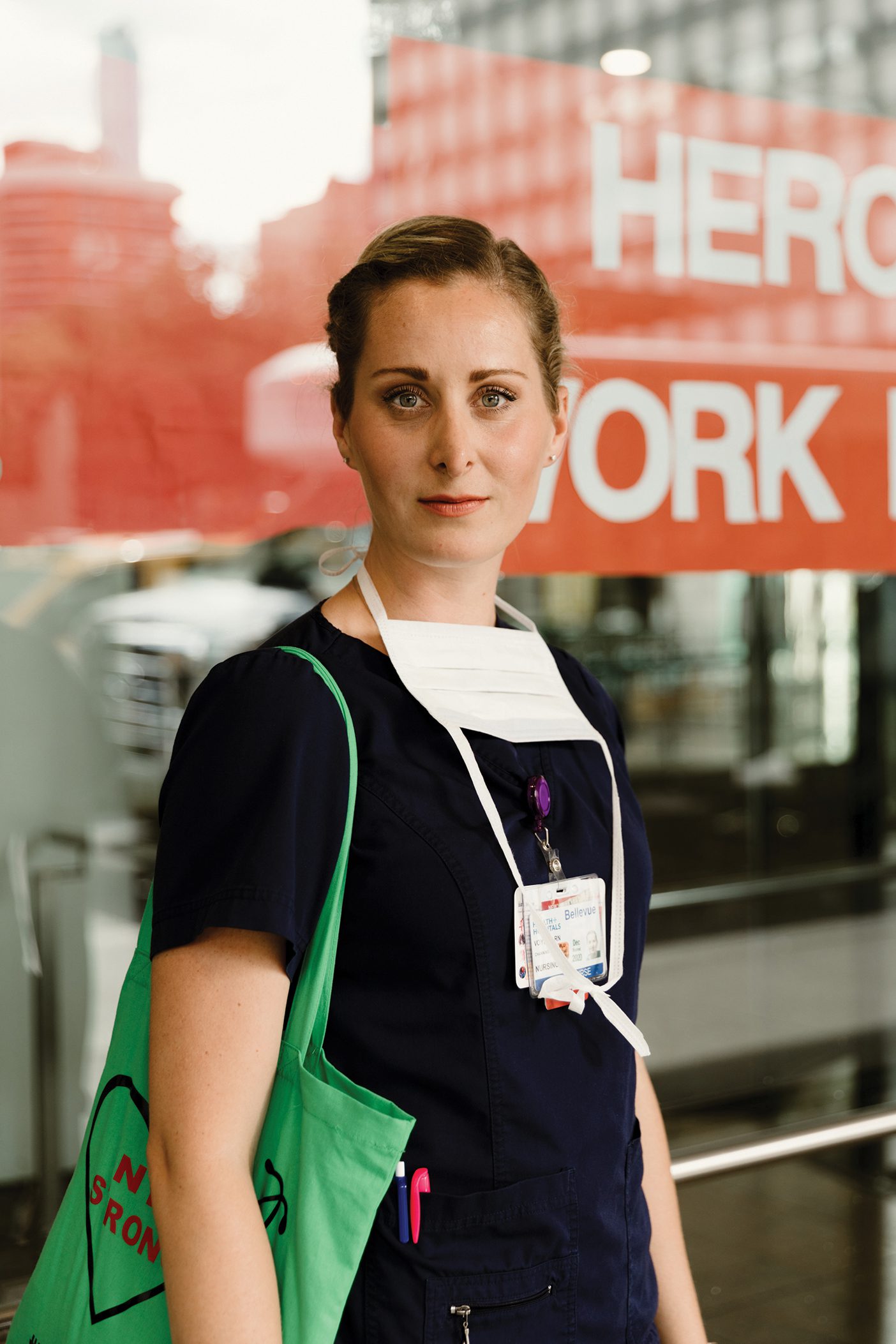
Normally we have patients and family and everybody’s talking and interacting. Now, no visitors are allowed, and the patients are all sedated and on ventilators. It’s quiet, eerie, sobering.
From the time these patients get sick until the time they either get discharged and go home or they pass away, they’re not allowed to see family. If they’re awake and alert, they can talk via FaceTime. If they’re not, then some wonderful social workers walk around using their personal cell phones to FaceTime. For each patient, they will hold the phone up from outside of the room so the family can see their loved one on the ventilator.
These families do not have any idea of what’s really going on, other than that their loved one is so, so sick. It’s a very lonely sickness. For the patient and for the families, it’s so isolating. And if the patient dies, these families never get to have a viewing of their family member after they pass. There’s no physical contact with them and no proper grieving. They can’t follow their different cultural practices. It’s traumatic.
I’ve been in this job for more than five years, and I saw more deaths in a month than I had ever seen in my entire life. I feel sad a lot. It’s been emotionally and physically taxing. Taking all the necessary physical precautions is exhausting. Wearing full-body personal protective equipment all day long is suffocating.
The experiences are raw to me. One of the most poignant was with a man I’ll call Roberto. For four weeks, every shift, I cared for him as his nurse and got to know him. Although he was very sick, he did have moments of lucidity, when we were able to communicate. He was only 35, and he had a 12-year-old son. I held out hope that he’d pull through.
But it was not to be. On the day that Roberto died, I went to his room to sit with him. I didn’t want him to pass away alone. Holding his hand and through tears, I sang “I Am a Child of God.” I prayed for Roberto and for his family. And though he had no family at his side in the hospital, I asked that he would be welcomed by loved ones in the spirit world. I prayed that he would know that we did everything we could to save him. An hour later Roberto was gone.
An hour after that, his young son wanted to see him. The social worker got him on the phone via FaceTime, and he got to see his dad one last time. I could see his face as he looked at his dad. He was speechless. He was numb. He had no emotion. And it just broke my heart because I knew I couldn’t comfort him and he couldn’t be there physically.
I’ve been inspired by the sheer courage of the health professionals around me—nurses, doctors, respiratory therapists, and the hospital staff—continuously putting themselves at risk of infection. We try to limit our contact, but we spend hours upon hours in direct contact with patients like Roberto every day. These medical teams have families at home and worry about transmitting the virus to them, but they still show up to work every day and give everything they have to patients who need their care. It’s a beautiful thing to see.
I’ve felt supported by my husband and others who are concerned about me. Lots of people are thinking of me and praying for me—and I feel the strength. I don’t feel fear when I go to work.
Stitching Together
By Suzanne Wasden Quackenbush (BS ’93)
Sue Quackenbush of Central Point, Oregon, is a mother to four daughters, a costume designer for a children’s theater group, and an elementary school teaching assistant.
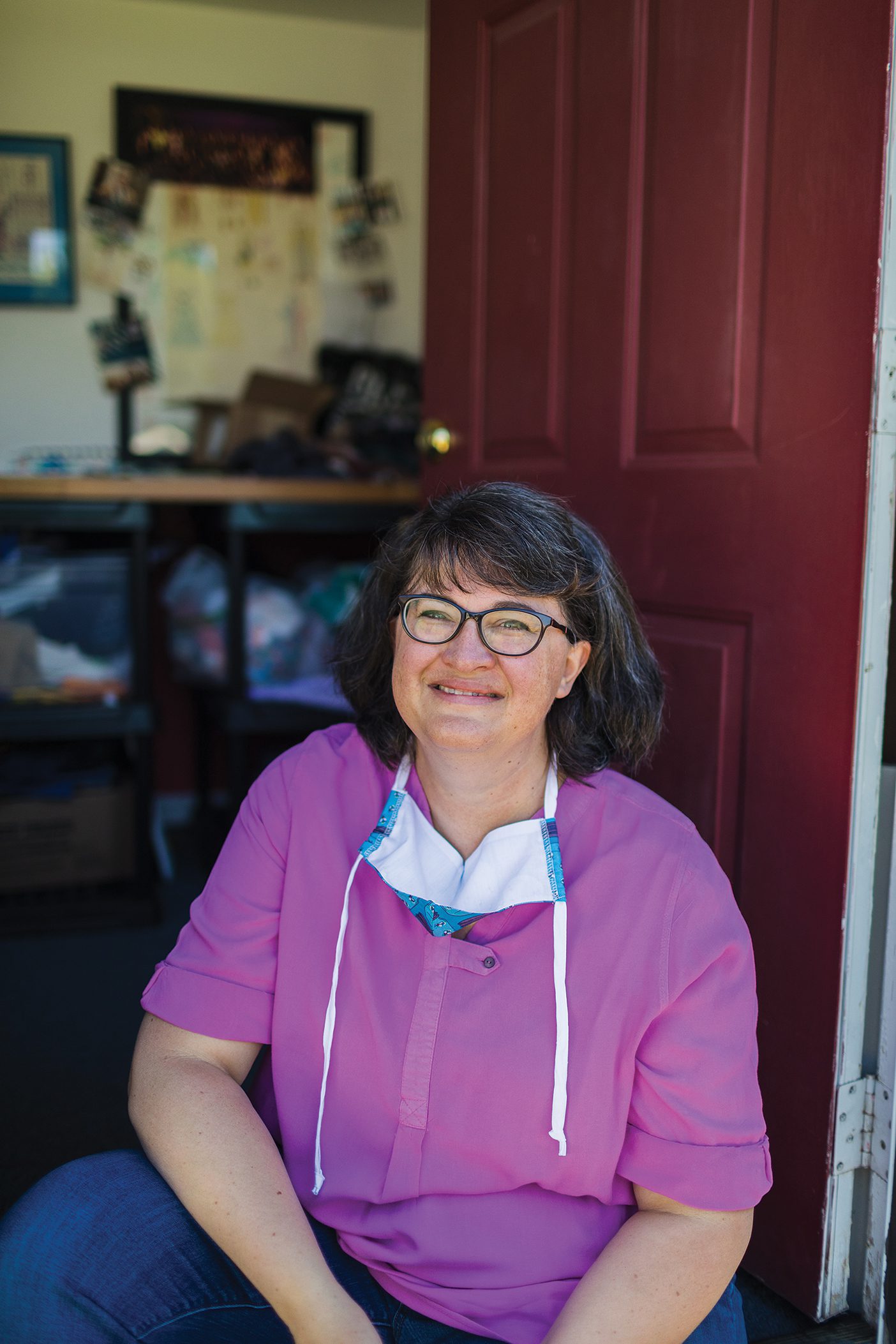
“What am I going to do with myself?” I wondered. On March 15 the school where I work as a teaching assistant announced plans to move everything online in response to coronavirus concerns. And then the children’s theater group that I was sewing costumes for canceled its new production. I was crushed—and suddenly in need of something to do.
What I did was nothing much—just sew a mask—and yet somehow that act would inspire and connect me to thousands of like-minded volunteers the world over.
It all happened so fast. The Wednesday after school went online, I learned from a friend about a shortage of personal protective equipment (PPE) at a nearby hospital in Medford. The nurses needed seven to 10 sets of PPE a day, but with the shortage they were lucky to have even one a week. However, they could make their supplies last longer with changeable masks to cover the PPE.
The nurse who let on about the shortage, Stephanie Brown, forwarded me a Japanese pattern, which I experimented with and adapted from the metric scale. And I sewed a mask.
I had barely finished that first mask when I got a call from our stake public-affairs director, Cynthia Wright: “Hey, I heard you’re making masks.” She wanted to send a news reporter. I couldn’t see what made this newsworthy. Even so, a few hours later, there I was in my sewing room showing a reporter how to stitch a simple mask together. My little tutorial ran on the evening news, and by the next day I had 100 messages from locals requesting more information.
On Friday my 15-year-old daughter recorded me making a mask on Facebook Live. By Sunday the video had 30,000 views. People from Texas, Georgia—everywhere—were writing in to thank me. One message came from a woman named Shirley, a costumer on Broadway in New York City: “Broadway has shut down. We need something to do, even if we’re not getting paid.” So she contacted the 3,000-strong Broadway Costumers Guild, and they started making masks for New York City.
Another message came from Indiana, where Monica was looking for masks. I wondered if someone in Indiana could get them to her quicker, so I contacted the local bishop. He texted back immediately: “We saw your video. We’re already making masks. We’ll take care of her.” When Monica learned that I was a Latter-day Saint, she told me she’d been wanting to look into the Church for a long time.
Such experiences fueled my drive to keep going. In the next short while, my daughters and I sewed a thousand or more masks ourselves. We created additional videos for YouTube, where we reached thousands more all over the United States and from Italy to Argentina. Fabric donations and sewn masks poured in from all directions. Cynthia and my friend Kristina Pratt Bennion (BS ’90) collected, organized, and distributed these generous donations.
We did this to serve, but the personal rewards have been great. The connections I’ve made have been so dear. People who were total strangers are now my best friends.
I believe God gives us skills to use for His purposes. I’ve always loved to sew, to create, and to make people happy. These months brought all of those together. That’s why I’ve been doing this.
When the Enemy Is a Virus
By Brett T. Swigert (BS ’96, MPA ’04)
Air Force colonel Brett Swigert develops intelligence policy in the Office of the Secretary of Defense at the Pentagon. Early in the pandemic he was chosen to join the Department of Defense’s COVID-19 Task Force to protect military personnel, provide continuous security for the United States, and support the Federal Emergency Management Agency (FEMA).
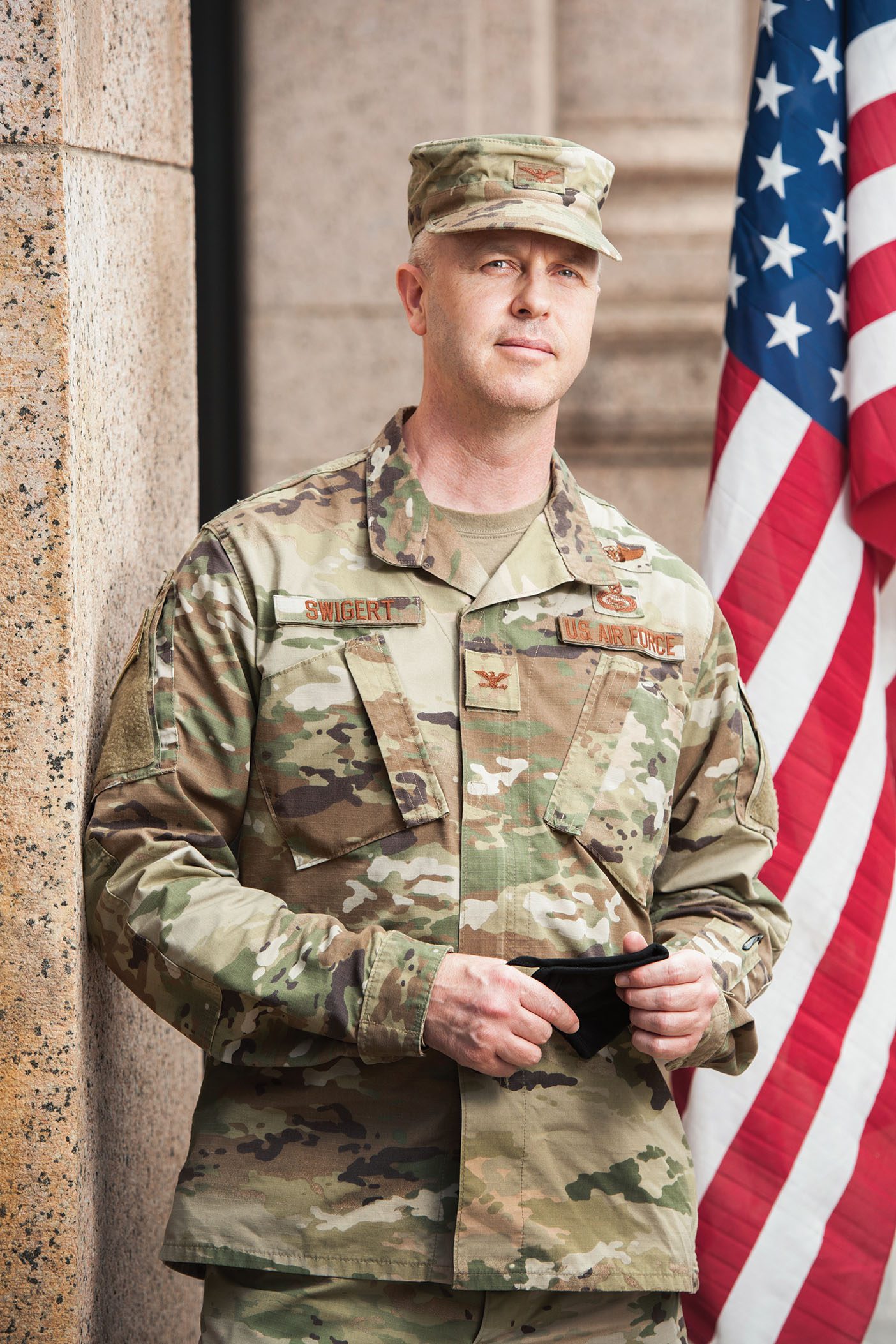
How do you fight an unknown?
The military normally knows what environments it will operate in and can therefore prepare for success. But when I was asked to join the COVID-19 Task Force, we were faced with all kinds of unsettling uncertainties. Early projections of American deaths ranged from hundreds of thousands to as many as a million. How would death and sickness on that scale affect our military readiness? How could we quickly pivot a military that’s largely focused internationally to deal with mass domestic casualties? A virus is simply a different kind of threat than we had ever faced before.
Our job on the task force was to consider how we could support FEMA domestically. And it involved unpleasant scenarios. Take transportation and logistics: What if truck drivers across the nation started getting sick? Would supply chains break down and food stop arriving at grocery stores? What if power grids stopped functioning due to operators and technicians getting sick or dying? Or take security: What if there weren’t enough police officers to deal with mass chaos? We had to be ready if the president or FEMA requested support.
Before the COVID-19 pandemic, I used to take the Metro or bus to the Pentagon, where it’s almost impossible to find parking. But when I joined the task force, I drove in each day and parked just outside the front entrance. The Pentagon is normally a city of more than 20,000; but today my steps echo in the vacant hallways as I walk to my office.
This task force feels a lot like a wartime deployment. There’s a mission, a command structure, long hours, and lots of unknowns until you get your feet on the ground. There was also that same instant camaraderie when we were are all thrown into a room together and realized we were about to become roommates, essentially, for the next who-knows-how-many-months and would have to rely on each other to act quickly for the country’s good.
But one thing has been starkly different, even special, with this task force. The military is normally like a huge ship that can take an excruciatingly long time to turn. But the sense of urgency from the secretary of defense and others during this pandemic was striking. Decisions that could take months or years to plan and implement now took hours or days. We mobilized more than 60,000 personnel. We deployed hospital ships and medical staff to support exhausted civilian medical teams. We assigned missions to the Army Corps of Engineers to build temporary hospitals, and National Guard units served on the front lines within their communities. I was even editing White House remarks the same day the president and others would be going on TV and calling generals to ask if they’d completed tasks from the secretary of defense.
Normally the military prepares to take lives, if necessary, to achieve the nation’s objectives. However, during this pandemic our military was focused on helping to save lives. This experience has taught me to think differently about applying the might and power of the greatest military force this world has ever seen. I’ve also learned to be more empathetic. A lot of folks are suffering from this virus or the loss of loved ones, and it has been humbling to serve them as part of the task force.
Top photograph by Marilyn in New York City for Flytographer.
Feedback: Send comments on this article to magazine@byu.edu.


